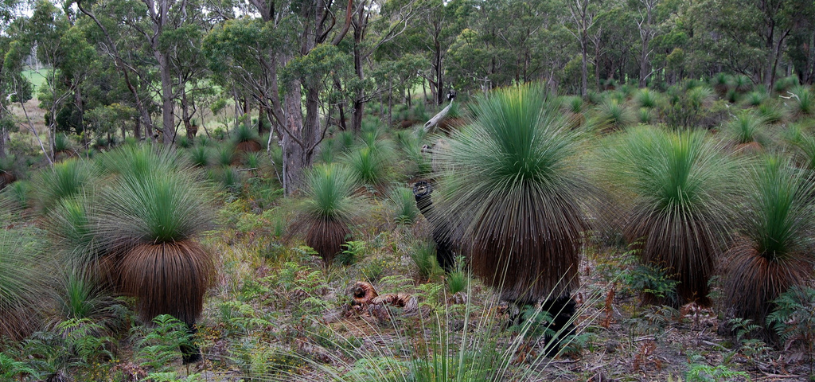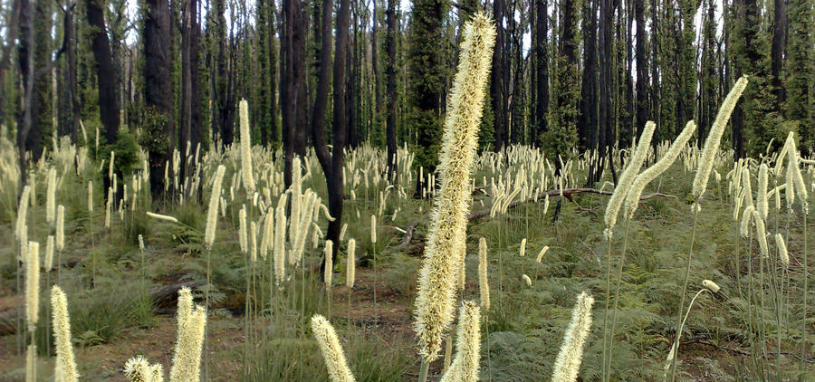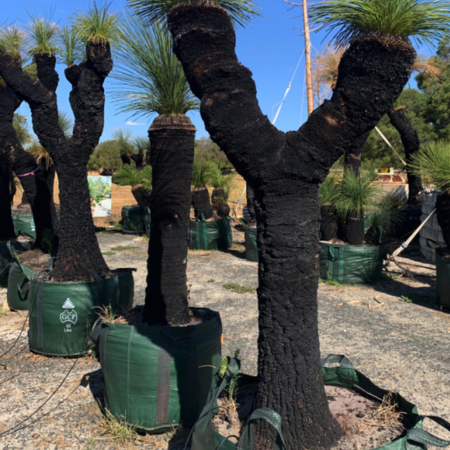Grass trees are one of Australia's most iconic native plants, known for their unmistakable grass-like leaves and dramatic flower spikes.
They've thrived across Australia's diverse landscapes for millions of years. So, they're built for Melbourne's stony, sandy, and even low-nutrient soils.
What makes them truly special is that they not only survive, but actually benefit from Melbourne's unpredictable weather patterns. While other plants struggle during our hot, dry summers or extended drought periods, grass trees will continue to flourish.
Once found only in the outback, now they're perfect for your backyard too.
Here's everything you need to know about grass trees, from their cultural significance and unique features to care tips and landscaping ideas.
Visit All Green's nursery to explore our range of grass trees and native plants, and chat with our expert team about choosing the right one for your garden.
What is a grass tree?
Grass trees, or Xanthorrhoea, get their name from their distinctive crown of long, grass-like leaves that sprout from a central growing point. You may also hear grass tree referred to as yacca, a name that likely originates from the Kaurna people in South Australia.
It is also known as balga in the Noongar language. This name refers to the tree's blackened trunk after it's been charred by fire. A familiar sight in the Australian bush.
Grass tree description and features
Slow growth and longevity
Grass trees are famously slow-growing, adding around just one centimetre of height each year. So the size you choose will stay much the same for a long time. Over many decades, they can eventually reach up to three metres tall.
This slow growth is part of their charm and also why they're so long-lived. Many grass trees in the wild are estimated to be hundreds of years old.
History and cultural significance
In Australia, grass trees have long held spiritual importance. The balga features in many Aboriginal stories and ceremonies, often symbolising endurance and renewal after fire.
Traditionally, grass trees were used in several ways:
- The resin collected from the trunk was used as a strong adhesive and waterproof sealant.
- The flower stalks were used to make lightweight spears and as a spindle for creating fire through friction.
- The base of the leaves and young flower shoots were sometimes harvested as a food source.
- The tree’s distinctive silhouette on hilltops often served as a landmark during travels and gatherings.
Burning grass trees
Controlled, low-intensity fires were, and still are, an important land management practice used to maintain healthy grass tree populations. The fire stimulates flowering and prevents overgrowth.
While burning is a traditional practice and crucial in the wild, it's not recommended in home gardens. Pruning is the safer way to care for your grass tree.
What are the different types of grass trees?
There are around 28 species of grass trees, varying in size, form, and resilience. Some develop tall trunks above the ground, while others remain low and compact, with their growth point protected underground.
In Victoria, you might come across three notable species:

Xanthorrhoea australis (Austral or southern grass tree)
The most common species in Victoria, it often features a stout, corky trunk that can grow up to three metres tall and thick. With a dense crown of blue-green leaves, it makes a perfect statement plant for larger gardens or open landscapes. Its hardiness and adaptability to Melbourne's sandy or rocky soils make it a popular choice.

Xanthorrhoea minor (Small grass tree)
A compact, trunkless species that stays low to the ground. Its smaller size makes it ideal for courtyards, rockeries, and smaller gardens where space is limited. Because of its manageable form and subtle presence, it's also well-suited for planting in pots or grouping with other natives for a layered effect.
.jpg)
Xanthorrhoea glauca subsp. Angustifolia (Grey grass tree)
A taller species with soft, grey-green foliage, it’s best suited to larger gardens where its full size and unique texture can be appreciated. While stunning, it’s less commonly found because it’s listed as a threatened species in Victoria. This means you’ll need to source it from a licensed, reputable supplier, like All Green.
Are grass trees protected?
Yes, all grass trees (Xanthorrhoea species) are protected native flora in Victoria. It is illegal to remove them from the wild without a permit, and doing so can carry significant fines.
When you buy from a reputable nursery like All Green, you can be confident your grass tree has been grown sustainably and responsibly.
Where do grass trees grow best?
Grass trees are highly adaptable but will perform best in full sunlight. When deciding where to place your grass tree, choose a position that showcases its unique shape, as a striking centrepiece in an open garden bed or as a focal point in a rockery.
For courtyards or smaller gardens, compact species like Xanthorrhoea minor work beautifully in pots or grouped with other natives.
For step-by-step instructions on planting and establishing your grass tree, check out our guide: How to grow a grass tree in your garden.
.png)
How do you care for grass trees?
Once established, grass trees are incredibly hardy and require very little maintenance. But a little care will help them look their best and thrive for decades.
Watering: In the first 6–12 months after planting, water deeply once or twice a week. After that, you may only need to water it during very long dry spells.
Feeding: Use a low-phosphorus native fertiliser once or twice a year to keep it healthy and encourage flowering.
Maintaining: Remove dead leaves from around the base to keep it neat and reduce fire risk. You can also trim the old flower spike once it dries out, but it's fine to leave it for wildlife.
Transplanting: Grass trees don’t transplant well unless they’re grown in containers or cared for by experts. Even then, they can take years to re-establish.
Where to buy your grass trees in Melbourne
At All Green Nursery, we stock a wide range of ethically sourced, healthy grass trees in various sizes.
Whether you're after a tall, dramatic feature or a compact, low-maintenance plant, our expert team is here to help. Visit us at our Hoppers Crossing nursery today.










